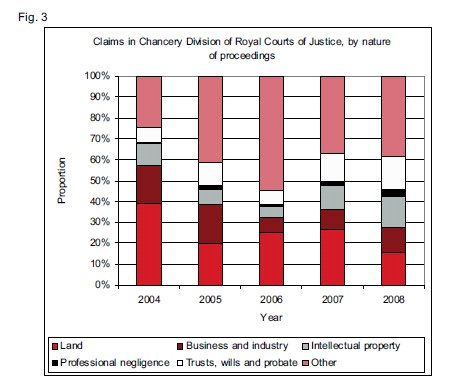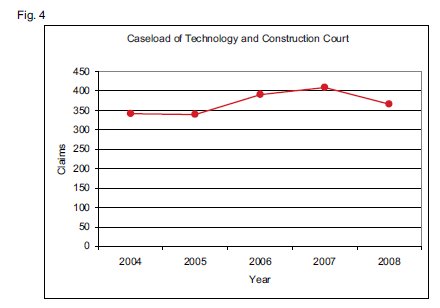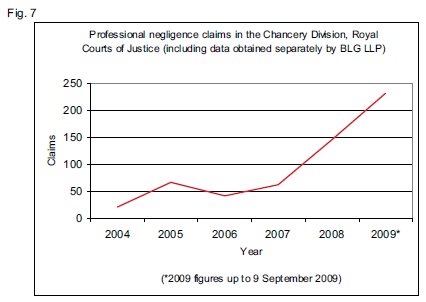On 24 September 2009, the Ministry of Justice published its report on judicial and court activity in England and Wales for the year 2008. The statistics have been eagerly awaited, particularly to see what effect the credit crunch and economic downturn will have on court business.
Analysis of the statistics demonstrates that, despite a rise in the number of proceedings, the overall increase in High Court litigation can hardly be described as dramatic. Last year's report indicated that, in 2007, (excluding the family division) 39,471 proceedings originated in the Royal Courts of Justice in London. This year's report indicates that, by 2008, this number had risen to 44,162 (see Fig. 1). The economic downturn clearly played a significant role in this increase, with proceedings originating in the Companies Court (which deals with company winding up petitions) and Bankruptcy Court accounting for over 80 per cent of it.
Comparisons of the number of claims issued in the Chancery and Queen's Bench Divisions of the Royal Courts of Justice show modest increases on previous years (Fig. 2). The number of claims issued in the Queen's Bench Division (5,173) continues to outweigh claims issued in the Chancery Division (3,779), and the gap has, in fact, widened since 2007.
In the Chancery Division, the number of land claims as a proportion of all claims issued is falling (Fig. 3). The number of claims dealt with by the Technology and Construction Court are similarly flat, with 366 claims received in 2008, compared to 409 in 2007 (Fig. 4). It is, perhaps, surprising that the recent upheaval in the property markets has not led to an upsurge in property and construction related litigation. However, with the advent of protocols it can often take some time before claims reach the courts, and it must be borne in mind that these are the figures for the 2008 calendar year.
The Commercial Court figures, by comparison, show a marked increase (Fig. 5) with 1,003 claims issued in 2008, compared with 839 the previous year. The most dramatic change is in the number of professional negligence claims, which continues to rise sharply, from 62 in 2007 to 147 in 2008 (Fig. 6). In a recession, claims against professionals tend to increase, as those who have lost out target their professional advisers and their professional indemnity insurers who are perceived to have deep pockets. Interim figures obtained by BLG LLP directly from the Chancery Division (and which are not included in the Judicial and Court Statistics 2008 Report), show that the trend in 2009 continues upwards, with over 230 professional negligence claims issued in the chancery division, by 9 September 2009 (Fig. 7).
In the Queen's Bench Division business continues to be dominated by personal injury actions, although debt claims also play a significant role (Fig. 8).
In the appeal courts, the proportion of civil appeals from the Court of Appeal in England and Wales allowed by the House of Lords has increased this year to 54 per cent, following an anomaly in the general trend in 2007, when more appeals were dismissed than allowed (Fig. 9). The Court of Appeal also kept up the trend, allowing 536 final appeals, next to 443 which were dismissed and 236 which were dismissed by consent, struck out or otherwise disposed of (Fig. 10).
We have come a long way from the pre-Woolf era, when the courts were packed to bursting point and even if the increase in litigation continues and at a higher rate, the number of cases reaching the courts is very unlikely to return to pre-1999 levels. Nevertheless, while the 2008 statistics do not suggest that the effect of the credit crisis had fully hit the courts last year, the signs are strong that claims are on the increase and a further a rise can be expected when the 2009 figures come out.







The content of this article is intended to provide a general guide to the subject matter. Specialist advice should be sought about your specific circumstances.

